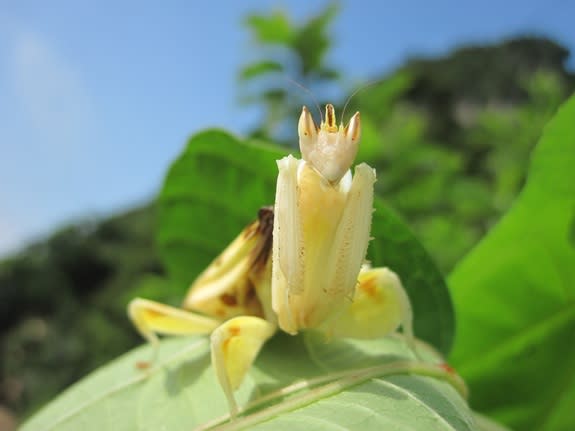Nature presents many examples of organisms evolving to mimic other creatures. For instance, many butterfly species imitate the toxic monarch butterfly, presumably to deter predators from eating them.
A variety of animals impersonate plants, such as the stick insect, which resembles a twig. Several animals color themselves like flowers, such as flower crab spiders and ambush bugs, to camouflage themselves when attacking insects that approach the blossoms.
However, the orchid mantis has a full flowery disguise, complete with legs shaped like petals, that is convincing enough for scientists to suggest this hunter not only uses the masquerade to hide from prey, but also to attract victims. Examples of such aggressive mimicry have been seen before in the wild; for instance, one species of bolas spider is known to attract male moths by imitating female moth sex pheromones.

Linkback:
https://tubagbohol.mikeligalig.com/index.php?topic=77001.0